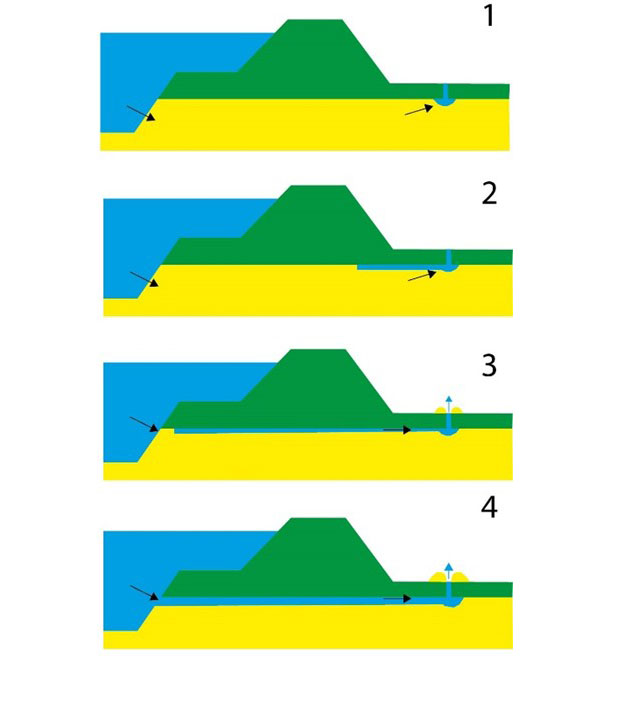Piping
S‘Piping’ involves the flow of groundwater under a dam with such pressure, that sand behind and under the dam is washed away. This creates instability and a high risk of dam failure. The risk is in the failing stability of the dam, not in the amount of water. Piping primarily occurs during periods of high water in the river, creating a substantial difference in water level between the river and the low laying land behind the dam. Piping risks primarily occur during high water incidents. Some flow of water under the dam is natural and no threat to its stability. It does not cause piping
Stabilizing soil underneath a dam
BISI can be deployed to cement sand grains to prevent washing them away, while allowing water to pass through.
This prevents unnecessary pressure building and allows continued natural groundwater flow. In BISI, we use natural soil microbial life to create a stable mineral binding agent. This is permanent; it does not require biology to remain stable.


No nuisance
We implement the biocementation processes underneath an existing dam, even in densely built-up areas or underneath infrastructure.
Main advantages include much reduced nuisance, and less costs as compared to traditional methods such as deep sheep piling or deep cement or grout walls. We introduce the required amendments into the soil using the same well tested techniques that we have been applying to in situ soil remediation for decades. Such techniques include direct injections (using injectors) or a set of well positioned injection and extraction wells.